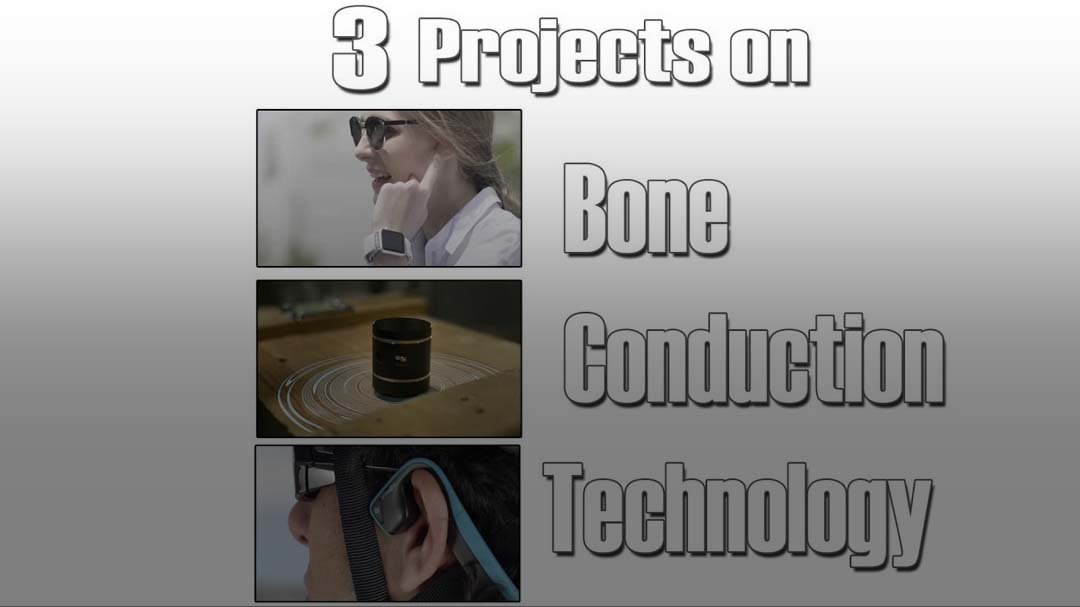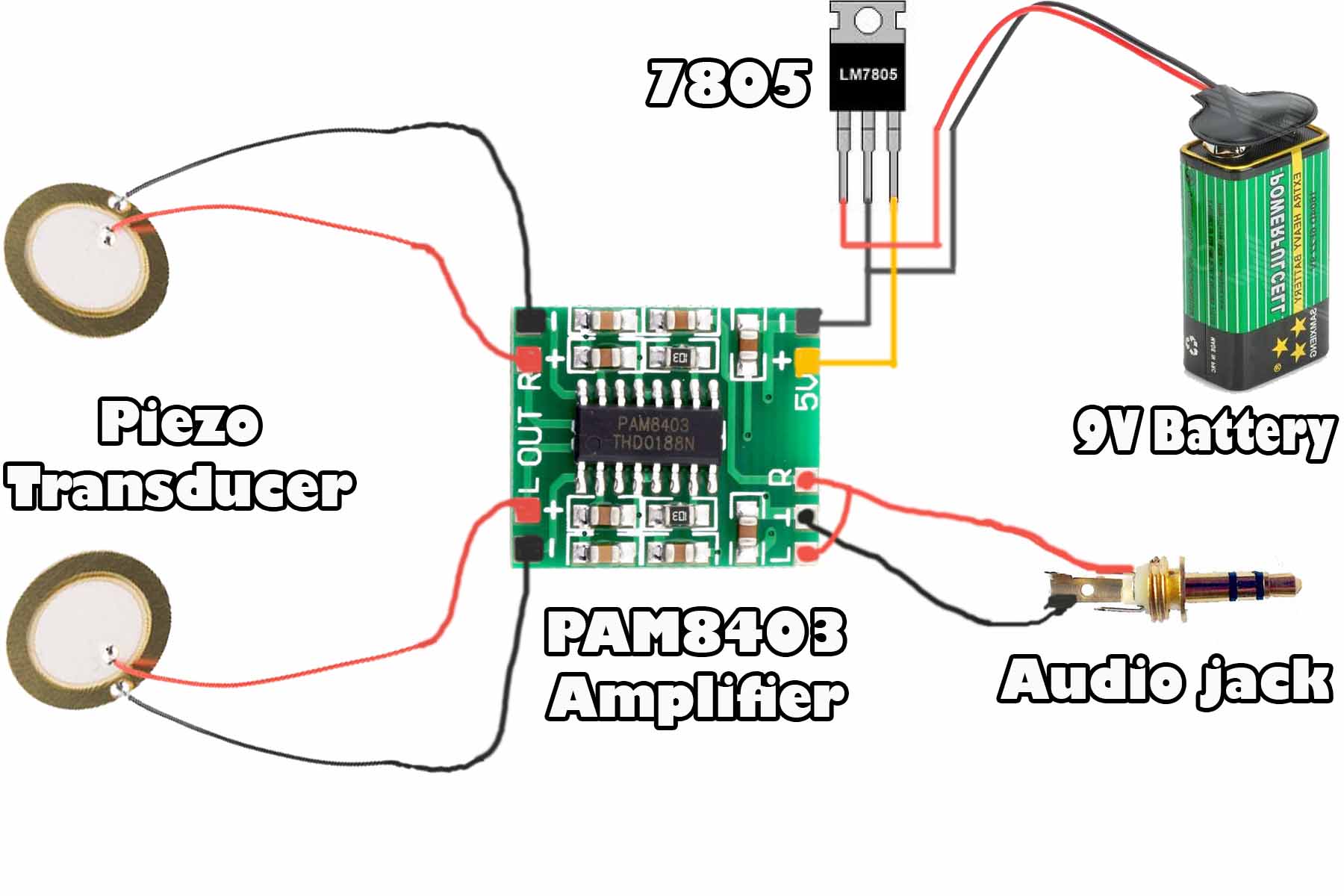3 Projects Using Bone Conduction

Introduction
Recently, when I was publishing some tech update videos, I came across one amazing tech gadget called SGNL. It’s a wrist band which when you wear it you can talk through your finger. When I researched about this product, I found that it uses the bones of the hand to conduct the sound. If you want to see that product, have a look to this tech update video. https://youtu.be/G45FwIMxW_Y
Bone Conduction Products
Then I found similar products that use bone conduction technology, like:

bone conduction headphones
How it Works?
Seeing all of these, I got so interested in this technology that I started a deep research on it, and tried to make a sample project using this technology. In the end, I succeeded in doing this and I am sharing all my research with you. Wikipedia has a simple and short definition of Bone Conduction Technology which says:
“Bone conduction is the conduction of sound to the inner ear through the bones of the skull. Bone conduction transmission can be used with individuals with normal or impaired hearing.”
Let’s understand this inner ear and outer ear concept. Normally we hear sounds conducted by vibrations in the air that cause vibrations on our eardrum, which is regarded as outer ear. These vibrations are sent to the cochlea which then sends signal to our brain. The cochlea is part of the inner ear.

Because the cochlea is embedded in bone It can capture vibrations from anywhere in the skull. The skull here acts as our means of conduction. So if we place a vibrating device on our head or behind the ears or anywhere it makes good contact with the bone, we can hear these sounds.

So by using our skull and inner ear, many tech products are developed using bone conduction which seems like magic to the layman.
Sample Project using Bone Conduction Technology
Main aim for this project was that, I wanted to create vibrations that can be attached around my head. So 2 things came to my mind that can convert electrical signals to vibrations: e.g. Motors & Piezo Transducers. I tried making bone conduction headphones first. Both attempts worked fine but Piezos were much better than motors. Let’s see how to make your own bone conduction headphones using Piezo transducers. Initially I tried connecting Piezo directly to the phone via 3.5 mm audio jack like this:

With this connection, your bone conduction earphones are ready…sort of. You’ll be able to hear through this but the volume will be negligible. You need to be in a silent place to hear even a little. So we need an amplifier in between to amplify the signal. For that, I used a PAM8403 class D amplifier. It is a stereo amplifier but I have used in mono mode rather than stereo.

After adding this amplifier, the quality of sound got better. We can actually hear just like our normal earphones. The only downside is that the bass is missing. But since we are just making a sample project to test bone conduction, it’s really good. Volume is so high with this amplifier, that we can hear from a distance through our outer ear also. But put this Piezo anywhere on the head, plug your ears, and you’ll be hearing music without ears. Just like MAGIC. Connections with amplifier circuit are as shown below:

With this circuit, you’ll get the amplified output at the Piezo transducer. This is the circuit I used for all the three projects: bone conduction headphones, bone conduction speakers, and bone conduction wrist band. You can place the Piezo on any surface. This little transducer will vibrate that surface and the vibrations will produce sound. This is the concept of bone conduction speakers. If you place the transducer in the bone of your finger, vibrations from the bone will be transferred at your finger tip and with that vibrations, you will be able to hear the sound. This is the concept of bone conduction smart band and also of SGNL.
Video Tutorial
If you still have any questions, watch this video tutorial on this project.

